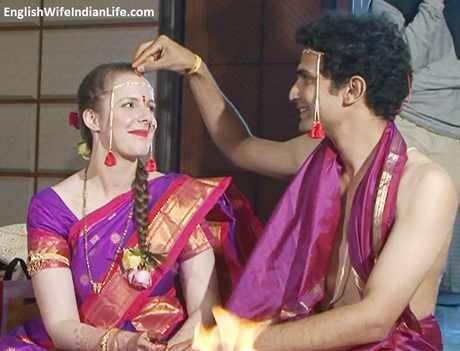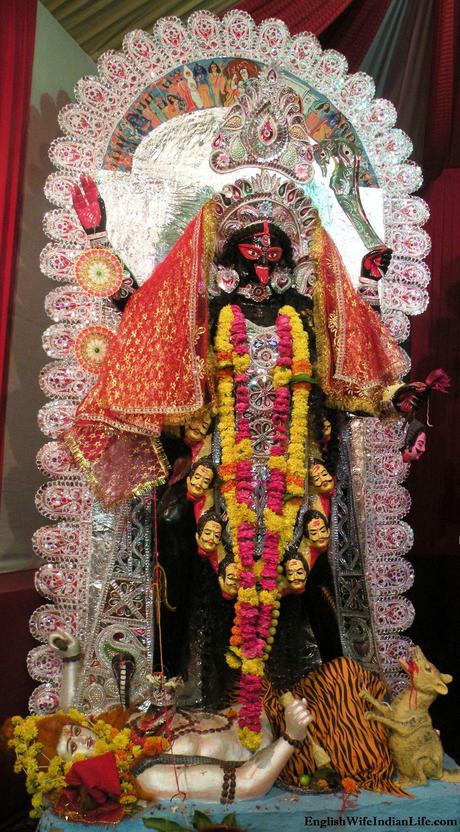Recently I met a girl who stared at me for a while before asking, “why do you wear sindoor? For me it is mandatory, but why do you apply it when you don’t have to?” The word mandatory made me stop and think as I noticed a recurring theme. I had met another girl, several months back, and she said to me something similar, “we hate having to wear these marriage symbols, but we have to, why do you wear them?”
When my husband applied sindoor to my hairline for the first time, I knew nothing of it’s significance. I had no history with sindoor, no background, no experience. As a child I didn’t see my mother apply it to her hairline every morning, I wasn’t told that once I became a wife it’s mandatory for me to wear it. I only saw the love behind my husband’s eyes and the fact we were now married. Sindoor became part of my personal journey and when I had to move back to England for a while after our marriage, wearing sindoor became a source of great comfort.

Applying sindoor at our wedding.
The ancient tradition of sindoor is said to symbolise the love and devotion a wife has for her husband, the red symbolising his life force. I didn’t consider that for some women (however much they may love their husbands), sindoor could be seen as an oppressive symbol which they “hate having to wear” . When you don’t have a choice, when something is mandatory, forced upon you against your will, you probably won’t be happy about it. I strongly feel no adornment should be mandatory. Sucks the romance right out of it doesn’t it…
I must admit that when I first moved to India I felt a lot safer when I wore sindoor, it’s perfectly visible that I am married and I don’t want anyone flirting with me. Yes, I felt a lot safer, but am I actually safer when I wear sindoor? What about the widows and unmarried women who are not “allowed” to wear sindoor? Sadly we cannot deny it, for various reasons, in India a woman’s status largely depends on having a husband.
I started to think about what sindoor means to me. I have never been pressurised to wear sindoor, so why do I continue to apply it? I actually feel powerful when I apply sindoor, I feel like a warrior applying war paint, but where is that coming from?
I thought about it for a long time and same image kept appearing in my mind, the image of Goddess Kali, the Goddess of revolution, change, creation and power. I thought about the color of blood-red sindoor, always seen on this powerful Goddess, which to me symbolises the life force in all of us as well as woman’s ability to menstruate, give birth and create new life. I started to see sindoor as a symbol of the sacred feminine that dwells within all of us, the shakti. In this patriarchal world, it’s important for women to remember their power and divinity (with or without applying sindoor).
***
The sindoor is a 5000 year old and sacred symbol, but like all symbols there is a certain degree of subjectivity depending on our experiences and opinions. How does sindoor make you feel?

I wrote this post several months ago but felt compelled to publish it tonight, the night of the new moon and the annual festival dedicated to Goddess Kali. Goddess Kali is a symbol of power, freedom and equality, she is Mother Earth and the destroyer of egos.
Happy Kali Puja!
